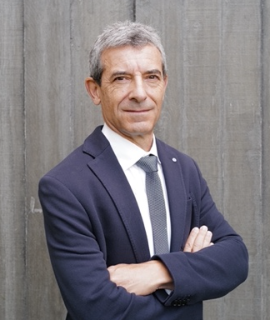Title : Bioelectrocatalytic materials based on buckypapers and biosourced glyconanoparticles
Abstract:
For four decades, the functionalization of electrodes by biomaterials based on electrogenerated polymers, carbon nanotubes and / or nano-objects, was widely used in the field of analytical chemistry and energy conversion for the design of biosensors and biofuel cells. Some new approaches for developing nanostructured biomaterials based on functionalized carbon or tungsten nanotubes, glyconanoparticles and compressions of carbon nanotubes will be illustrated with enzymes or antibodies as catalytic or biosensing element.
In particular, the anchoring of biological macromolecules to the surface of electrodes has been carried out by chemically functionalizable electrogenated polymers. In addition, the self-assembly of carbon nanotubes via crosslinking polymers in the form of buckypapers was used. Composite bioelectrodes by compression of enzymes and carbon nanotube mixtures will be also reported. The concept of the hollow bioelectrode is based on the bonding of two conductive sheets composed of carbon nanotubes (buckypaper) whose assembly generates a microcavity defined by the thickness of the glue linking the two sheets. These buckypapers are permeable only to water and enzyme substrates but not allow the permeation of enzymes. Therefore, the enzyme trapped in powder form is then solubilized inside the microcavity leading to a high density of biocatalyst in solution with an electrical connection with the buckypapers. The electrocatalytic performance of the bilirubin oxidase hollow electrode was described as a function of pH, temperature and the amount of entrapped enzyme. The operational and storage stability of the bioelectrode in The development of glyconanoparticles resulting from the self-assembly of block copolymers composed of polystyrene and cyclodextrin as an inclusion site will be also reported. These glyconanoparticles, which are stable in water, constitute a multivalent platform for enzyme binding and hydrophobic electroactive molecules. These nanoparticles were applied to the elaboration of solubilized enzymatic fuel cell in solution or were grafted on surfaces for the development of amperometric enzyme electrodes.)
Audience Take Away:
- This presentation, in particular, presents an innovative and unpublished work on the design of a very thin, large surface area flat hollow bioelectrode configuration with an enzyme trapped inside a microcavity and its application to the electroenzymatic reduction of O2. The audience can learn how to fabricate hollow electrodes and exploit these electrodes for bioelectrocatalysis.
- Moreover, this simple elaboration of hollow electrode can be easily extended to trapping other organic or inorganic catalysts offering thus promising applications, in particular in energy conversion.
- An original approach of mixing and compressing CNT and protein powders to obtain easily mm-sized solid pellets will be described and the audience can used this method to develop original disks


